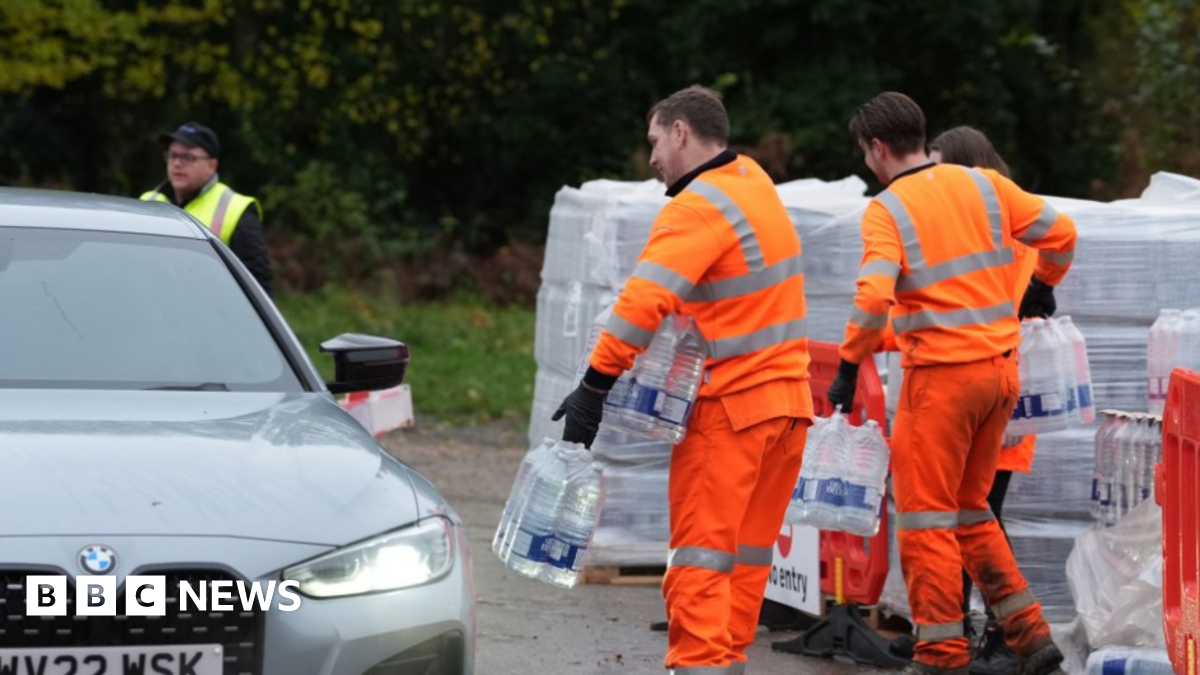The Road to Green 21: Transforming European agriculture amid water stress – European Commission

Report on Agricultural Water Management and Sustainable Development Goals in Europe
1.0 Introduction
This report examines adaptive agricultural practices in response to increasing water challenges across European regions, with a specific focus on case studies from Portugal and Ireland. These initiatives are analyzed in the context of their contribution to the United Nations Sustainable Development Goals (SDGs), particularly SDG 6 (Clean Water and Sanitation), SDG 2 (Zero Hunger), and SDG 12 (Responsible Consumption and Production). The report highlights how innovative farming techniques and policy frameworks are addressing water stress and pollution, thereby advancing the global sustainability agenda.
2.0 Case Study: Portugal – Enhancing Water Efficiency in a Scarcity Context
In Portugal’s Alentejo region, escalating drought frequency poses a significant threat to agricultural viability and food security. Local farming operations are implementing advanced water management systems that directly support several SDGs.
2.1 Implemented Technologies and Practices
- Drip Irrigation: Delivers water directly to plant roots, minimizing evaporation and waste.
- Subsurface Monitoring: Underground sensors provide real-time data on soil moisture, enabling precise irrigation.
- Climate Data Integration: On-site weather stations inform water usage based on current environmental conditions.
- Infrastructure Integrity: Leakage detection systems prevent water loss throughout the distribution network.
- Water Circularity: Water reuse systems are employed to maximize the utility of every cubic meter of water.
2.2 Alignment with Sustainable Development Goals
- SDG 6 (Clean Water and Sanitation): These measures are a direct implementation of Target 6.4, which aims to substantially increase water-use efficiency across all sectors.
- SDG 2 (Zero Hunger): By creating resilient agricultural systems (Target 2.4), these innovations help ensure sustainable food production in the face of climate-induced water scarcity.
- SDG 12 (Responsible Consumption and Production): The reduction in water consumption exemplifies Target 12.2, promoting the sustainable management and efficient use of natural resources.
3.0 Case Study: Ireland – Combating Agricultural Pollution
In Ireland, the primary water challenge stems from nutrient pollution from agricultural activities, which degrades river and groundwater quality. With only 54% of the nation’s water bodies meeting high ecological standards, collaborative efforts are underway to mitigate this impact and restore ecosystem health.
3.1 Mitigation Strategies
- Constructed Wetlands: Creation of wetland ponds to naturally filter nutrient runoff from farmland before it enters watercourses.
- Buffer Zones: Establishment of vegetated strips alongside rivers and streams to absorb excess nutrients and sediment.
3.2 Alignment with Sustainable Development Goals
- SDG 6 (Clean Water and Sanitation): These actions directly address Target 6.3, which focuses on improving water quality by reducing pollution and minimizing the release of hazardous chemicals.
- SDG 14 (Life Below Water) & SDG 15 (Life on Land): By preventing pollutants from entering freshwater systems, these initiatives protect and restore aquatic ecosystems, contributing to the conservation of biodiversity.
4.0 European Union Policy Framework and Global Goals
The efforts in Portugal and Ireland are reinforced by a comprehensive EU policy framework designed to ensure water resilience and sustainability, aligning with broader international commitments.
4.1 Key EU Directives and Strategies
- EU Water Framework Directive: Aims to protect and restore clean water across the EU, setting a benchmark for the ecological health of water bodies.
- EU Water Resilience Strategy: Sets a target to increase water efficiency by at least 10% across the Union by 2030, tackling scarcity through improved management and innovation.
Agriculture, which accounts for 29% of total water abstraction in the EU, has the potential to reduce its water usage by up to 20% through smart farming. These policies are critical for achieving SDG 6 and SDG 12 by promoting integrated and efficient water resource management across member states.
Analysis of Sustainable Development Goals in the Article
1. Which SDGs are addressed or connected to the issues highlighted in the article?
The article addresses several interconnected Sustainable Development Goals (SDGs) by focusing on the challenges of water management within the agricultural sector in Europe. The primary SDGs identified are:
- SDG 6: Clean Water and Sanitation: This is the most central SDG in the article. It is directly addressed through discussions on water stress, drought, water consumption, water efficiency, water reuse, and nutrient pollution in rivers and groundwater.
- SDG 2: Zero Hunger: The article is set in the context of agriculture, a vital sector for food production. It highlights the need for sustainable and resilient agricultural practices to ensure food security amidst growing water challenges, which connects directly to ensuring sustainable food production systems.
- SDG 12: Responsible Consumption and Production: The article’s emphasis on increasing water efficiency, reducing water usage, and reusing water in agriculture aligns with the goal of achieving sustainable management and efficient use of natural resources.
- SDG 15: Life on Land: The discussion on nutrient pollution from farms impacting rivers and groundwater, and the implementation of solutions like wetland ponds and buffer zones to protect these water bodies, relates to the protection and restoration of freshwater ecosystems.
2. What specific targets under those SDGs can be identified based on the article’s content?
Based on the issues and solutions presented, the following specific SDG targets can be identified:
- Target 6.3: By 2030, improve water quality by reducing pollution, eliminating dumping and minimizing release of hazardous chemicals and materials, halving the proportion of untreated wastewater and substantially increasing recycling and safe reuse globally.
- Justification: The article highlights the problem of “nutrient pollution from farming in rivers and groundwater” in Ireland and showcases solutions like “wetland ponds and buffer zones to prevent nutrient runoff,” which are direct efforts to improve water quality by reducing pollution.
- Target 6.4: By 2030, substantially increase water-use efficiency across all sectors and ensure sustainable withdrawals and supply of freshwater to address water scarcity and substantially reduce the number of people suffering from water scarcity.
- Justification: The article describes how a farm in Portugal’s Alentejo region uses “drip irrigation, underground sensors, weather stations, leakage detectors, and water reuse systems to significantly reduce water consumption.” Furthermore, it mentions the EU’s goal to “increase water efficiency by at least 10% across the EU by 2030.”
- Target 2.4: By 2030, ensure sustainable food production systems and implement resilient agricultural practices that increase productivity and production, that help maintain ecosystems, that strengthen capacity for adaptation to climate change, extreme weather, drought, flooding and other disasters and that progressively improve land and soil quality.
- Justification: The innovative agricultural practices described in both Portugal (to combat drought) and Ireland (to manage nutrient runoff) are examples of resilient and sustainable systems designed to adapt to environmental challenges while maintaining agricultural production.
- Target 12.2: By 2030, achieve the sustainable management and efficient use of natural resources.
- Justification: The entire article focuses on the more efficient use of water, a critical natural resource, within agriculture. The European Environment Agency’s statement that agriculture “has the potential to reduce water usage by up to 20% through smart farming” directly supports this target.
- Target 15.1: By 2030, ensure the conservation, restoration and sustainable use of terrestrial and inland freshwater ecosystems and their services, in particular forests, wetlands, mountains and drylands, in line with obligations under international agreements.
- Justification: The efforts in Ireland to create “wetland ponds and buffer zones” are direct measures to conserve and protect inland freshwater ecosystems (rivers and groundwater) from the harmful effects of agricultural pollution.
3. Are there any indicators mentioned or implied in the article that can be used to measure progress towards the identified targets?
Yes, the article mentions several quantitative and qualitative indicators that can be used to measure progress:
- Indicator for Water Quality (Target 6.3): The article provides a specific metric for water quality in Ireland: “only 54% of Ireland’s water bodies currently meet good or high ecological standards.” This percentage serves as a baseline indicator against which future improvements can be measured.
- Indicators for Water-Use Efficiency (Target 6.4):
- The EU’s target to “increase water efficiency by at least 10% across the EU by 2030” is a clear quantitative indicator.
- The potential for agriculture to “reduce water usage by up to 20%” is another quantitative indicator of potential progress.
- Indicator for Natural Resource Management (Target 12.2): The statistic that “Agriculture accounts for 29% of the EU’s total water abstraction” acts as a baseline indicator. Progress towards Target 12.2 could be measured by a reduction in this percentage over time.
- Implied Indicators for Resilient Agriculture (Target 2.4) and Ecosystem Protection (Target 15.1): The article implies qualitative indicators by listing specific technologies and methods. The rate of adoption or the total area of farmland utilizing techniques such as “drip irrigation,” “underground sensors,” “water reuse systems,” “wetland ponds,” and “buffer zones” could be used as indicators to measure the implementation of sustainable practices.
4. Table of SDGs, Targets, and Indicators
| SDGs | Targets | Indicators Identified in the Article |
|---|---|---|
| SDG 6: Clean Water and Sanitation | Target 6.3: Improve water quality by reducing pollution. | The percentage of water bodies meeting good or high ecological standards (Baseline mentioned: 54% in Ireland). |
| SDG 6: Clean Water and Sanitation | Target 6.4: Substantially increase water-use efficiency. | Percentage increase in water efficiency (EU target of 10% by 2030); Percentage reduction in water usage by agriculture (Potential of 20%). |
| SDG 2: Zero Hunger | Target 2.4: Ensure sustainable food production systems and implement resilient agricultural practices. | Adoption of specific techniques (e.g., drip irrigation, sensors, water reuse, wetland ponds, buffer zones). |
| SDG 12: Responsible Consumption and Production | Target 12.2: Achieve the sustainable management and efficient use of natural resources. | Percentage of total water abstraction by agriculture (Baseline mentioned: 29% in the EU). |
| SDG 15: Life on Land | Target 15.1: Ensure the conservation and sustainable use of inland freshwater ecosystems. | Implementation of protective measures like wetland ponds and buffer zones to prevent nutrient runoff into rivers and groundwater. |
Source: environment.ec.europa.eu
What is Your Reaction?
 Like
0
Like
0
 Dislike
0
Dislike
0
 Love
0
Love
0
 Funny
0
Funny
0
 Angry
0
Angry
0
 Sad
0
Sad
0
 Wow
0
Wow
0



















































.jpg.webp?itok=0ZsAnae9#)

























